TechRadar Verdict
Windows RT means the Lumia 2520 can't take Windows tablets to the next level.
Pros
- +
Attractive design
- +
Bright display
- +
Great battery life
- +
Fast charging
- +
Speedy performance
- +
Built-in LTE
Cons
- -
Windows RT underpowered
- -
No Kickstand
- -
No full-sized USB port
Why you can trust TechRadar
The Nokia Lumia 2520 is the Finnish giant's first - and possibly last - tablet. Announced back in October, collective eyebrows were raised when it was revealed that the device would run Windows RT, which has endured a miserable time since launching just over a year ago.
Citing weak demand, every vendor to have once backed Microsoft's cut-down, ARM-based OS has since withdrawn support. After Dell removed the RT-toting XPS 10 from its online store back in September, it looked like RT was done for, Surface tablets aside. Unfortunately for Microsoft, nobody seemed to care.
That a new RT device has poked its head from above the parapet is intriguing; that its maker is Nokia even more so. Microsoft inked a deal in September that would see it snap up Nokia's devices and services division for £3.2 billion (US$5 billion, or AU$5.6 billion), meaning that it now has two competing Windows RT devices on the market (the other being the Surface 2).
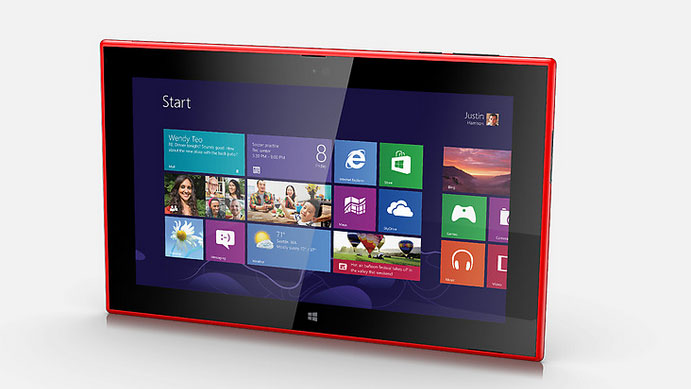
The good news for Microsoft is that the Nokia Lumia 2520 is different enough from the Surface 2 to warrant its place on the market; neither is likely to make a solid dent in the other's sales. It runs the same software, but Nokia's choice of hardware, design and features lend it a different personality and appeal.
If it sells, we may see a successor in the future. Should it fail, there's a chance that Microsoft will axe the line to shift the focus back onto its RT-powered Surface tablets.
Lumia landing
If you're thinking of buying a Nokia Lumia 2520, you'll have two to choose from - a 32GB or a 64GB model - with a choice of red, black, cyan and white depending on where you live. You'll have to cough up £399 ($399, or around AUS$450), which gets you a lot of tablet for your money, but it's up against some stiff competition.
As well as going head-to-head with the Surface 2, the Nokia Lumia 2520 is competing with similarly-priced convertibles that run full-fat Windows 8.1 such as Asus' Transformer Book T100 that can be picked up for as little as £339 ($399, around AU$430) with a keyboard dock included.
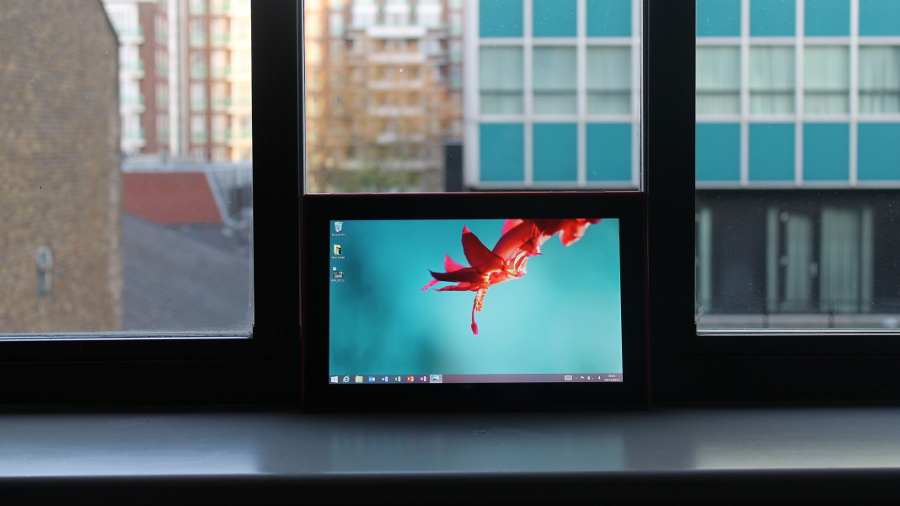
And then there's Apple's thinner, lighter iPad AIr (starting £397, around US$652, or AUS$716) that offers an alluring design with plenty of apps. From the Android camp there's the Sony Xperia Z (£353, around $388, or AUS$637) and Samsung's Galaxy Note 10.1 (£350, around $385, or AU$634).
Can Nokia's debut tablet somehow make up for Windows RT's shortcomings and stand out from the crowd? Or is it a case of too little, too late for the latest entrant? Continue reading our Nokia Lumia 2520 review to find out.
The Nokia Lumia 2520 is instantly recognisable as a Lumia device thanks to its candy-coloured polycarbonate shell. The tablet's shell is all plastic which lends it a playful and laid back, yet oddly premium feel that makes the Surface 2 comes across cold industrial in comparison.
Its design borrows heavily from Nokia's 1510 smartphone and is similarly comfortable to hold thanks to its smooth edges and rounded corners. All that caressing comes at a cost, however, as you'll be wiping away fingerprints from the second you turn it on to the moment you set it down.
The Nokia Lumia 2520 sports a 10.1-inch 1920 x 1080-pixel-resolution display (218 dpi) with Corning Gorilla Glass 2. It's a widescreen 16:9 panel that's more suited to landscape mode and holds certain advantages in areas such as viewing cinematic video content without having to put up with annoying black border and snapping Windows 8.1's apps side-by-side.
However, its dimensions can feel a little awkward at times compared to the iPad's squarer 4:3 aspect ratio and occasionally make the device feel like a technologically savvy wine menu. I've seen flashy restaurants hand out iPads to customers for them to make orders, so if all else fails, the Lumia 2520 has at least one area it knows it will excel in.
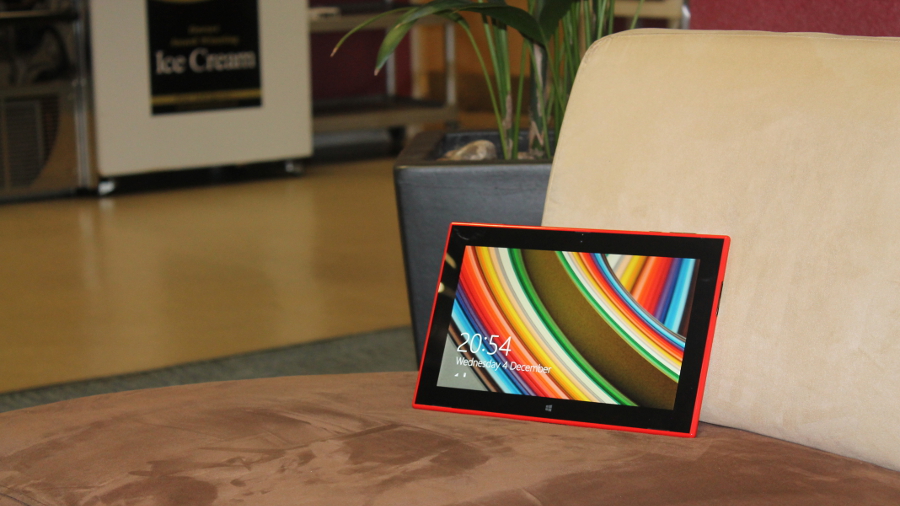
On display
The Nokia Lumia 2520's full-HD resolution looks sharp and leaves ample room for desktop icons, snapping windows and lining up tiles on the Start Menu, but it's a shame Nokia didn't take the opportunity to fit its debutant with something truly dazzling.
If there was a time to out the world's first Windows RT device with a quad-HD display (or thereabouts), this was it. The iPad has had a Retina display for just over a year (the iPad Air's has a 2048 x 1536 pixel resolution), and newer entrants such as Dell's 11.6-inch XPS 11 laptop (2560 x 1440) are whipping up excitement through their lofty resolution-driven ambitions.
Of course, there is a solid argument that portable computers don't need such high resolution displays and, for the most part, I agree. Scaling problems in Windows 8.1 almost ruined the Surface Pro 2's overall experience; however, such issues are much less noticeable on the Lumia 2520 in the absence of third-party desktop apps - such as Google Chrome and Spotify - that are yet to be given a high-res update.
Don't get me wrong: I'm not trying to wrangle a positive out of Windows RT having a barren app store (I'll get to that shortly). It's just that you don't notice scaling issues quite so often, and I believe that ramping up the resolution would help lift Windows RT's appeal in the same way that the iPad 3's Retina display gave Apple's tablet a whole new lease of life.
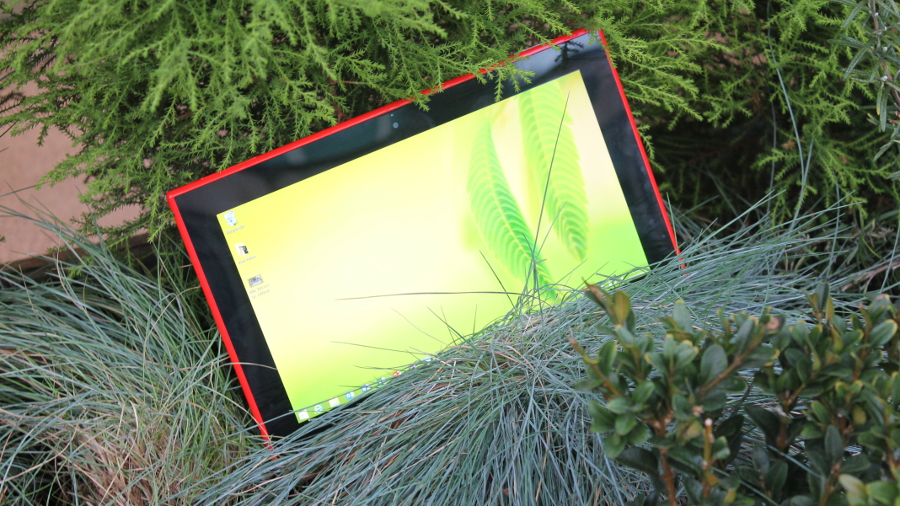
But to give Nokia and the Lumia 2520 credit where it's due, the tablet is in another league to its competitors when it comes to outdoor reading. Nokia claims that it offers "best in class outdoor readability" thanks to its 650 nits peak brightness, and it's one that holds true.
Set to full brightness, we could read website text with ease outdoors in bright sunlight from all of its 178-degree wide viewing angles. Readability is even better in lower light conditions, showing off vibrant colours with decent colour reproduction thanks to Nokia's ClearBlack technology.
The weight escape
In the weight department, the Nokia Lumia 2520 is slightly off balance, feeling marginally heavier when held by its right-hand edge than the left. Thankfully, it's a fairly lightweight device, tipping the scales at 1.36 pounds. At 8.2mm, it's the same thickness as the Surface 2 and is slightly chunkier than the iPad Air (7.5mm).
You still won't be wanting to hold it in a single hand for long periods of time, but if you do, it's marginally more manageable than the Surface 2's 1.49 pounds. Only Apple's svelte iPad Air (1 pound) and Asus' Transformer Book T100 (undocked - 1.2 pounds) exist as more portable alternatives in the 10-inch category.
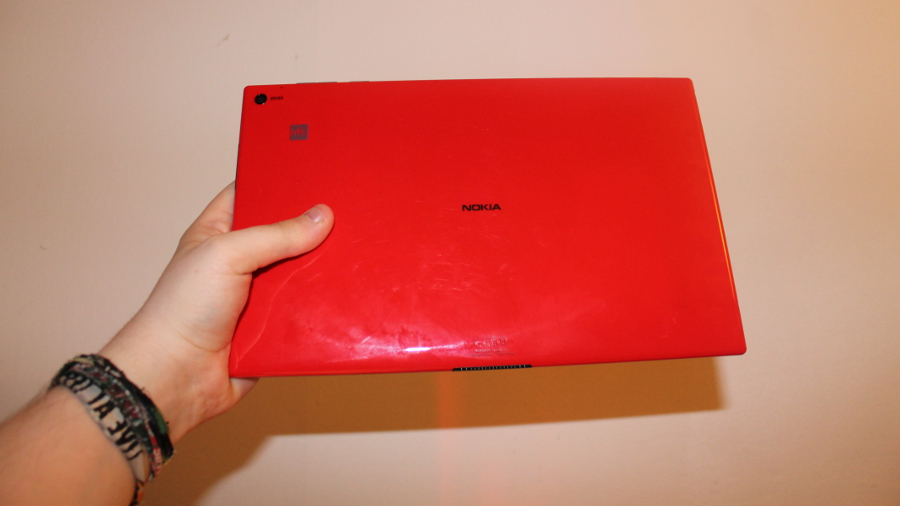
The 2520's curvy nature and bright screen makes it an appealing tablet for the occasional spot of reading, but if you're planning on buying a device to satisfy your bookworm tendencies, you'd be better off with a dedicated e-reader, or a smaller tablet option in the form of Apple's iPad Mini 2 or the new Nexus 7.
The tablet feels solid in the hand but gives off some flex when applying pressure between its front and back panels. It's not flimsy - far from it - but you don't quite get the industrial-strength feeling you get from the VaporMG casing protecting Microsoft's Surface 2.
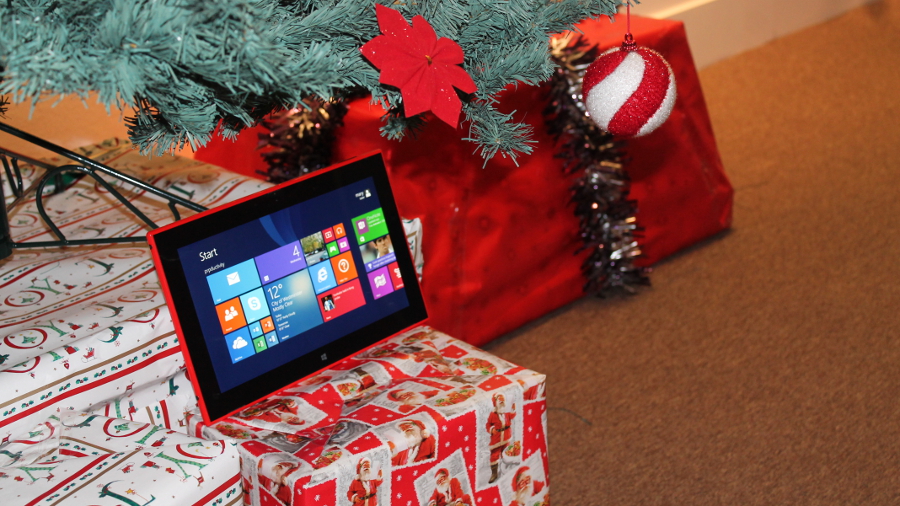
It's also creakier than a Pennsylvanian cellar door when flexed, though that's not something you're likely to notice in general use and not a cause for concern.
Prise open the Lumia 2520 and you'll find a 2.2GHz quad-core Qualcomm Snapdragon 800 (MSM8974) processor alongside an Adreno 330 graphics backed up by 2GB RAM. Other features include an ambient light sensor, accelerometer, gyroscope, proximity sensor and magnetometer, and storage can be boosted by 64GB via a micro-SD card slot.
The Nokia Lumia 2520 comes with an array of ports and accessories in tow that, while welcome, don't feel integral to the overall experience in the same way that Microsoft's Touch and Type Cover keyboards are to how you use its Surface tablets.
Along the right-hand side of the device's top edge is the power button and a pair of volume rockers. The buttons are rounded to match the 2520's design and are comfortable to press, with a spongy feel. Along the tablet's left-hand side are two identical rounded ports - one for headphones and one for Nokia's proprietary charging cable - with nothing but a tiny piece of gold metal indicating that the latter is for the power adapter.
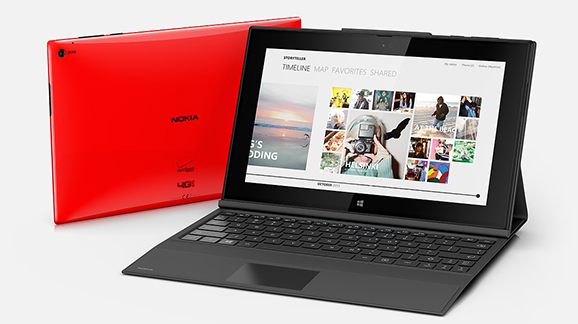
Down the 2520's right-hand edge are two ports: micro HDMI for hooking the tablet up to an external display and micro USB 3.0. You can't use the mico-USB port to charge the device (only to transfer files), which feels like something of a missed trick in a world where laptops like HP's Chromebook 11 can be juiced up using a smartphone cable. That said, if it's a trade off between convenience and length of time to charge, I would take a faster, proprietary power brick any day.
Kickstand down
Disappointingly, the Lumia 2520 lacks a Kickstand, which feels like a glaring omission in the face of the two-angled offering found on the back of the Surface 2. It means you'll have to settle for Nokia's Power Keyboard if you want to stand your Lumia 2520 up in landscape mode without leaning it on something, adding 30mm thickness to the device in the process.
Of course, you'll also get a built-in keyboard with that (unfortunately we weren't supplied one with our testing unit), but given the choice I'd take the inclusion of a kickstand and a marginally heavier tablet over one with no native prop-up mechanism that's ever so slightly lighter in the hand.
It makes the Lumia 2520 feel much more like a device that's primarily a tablet and is only meant to be paired with a keyboard on the odd occasion, rather than a complete laptop solution that's ready to get down to business. At £150 (around $160, or AU$190), the cover doesn't come cheap either, ramping the total cost up to £550 should you stump for the cheapest version.
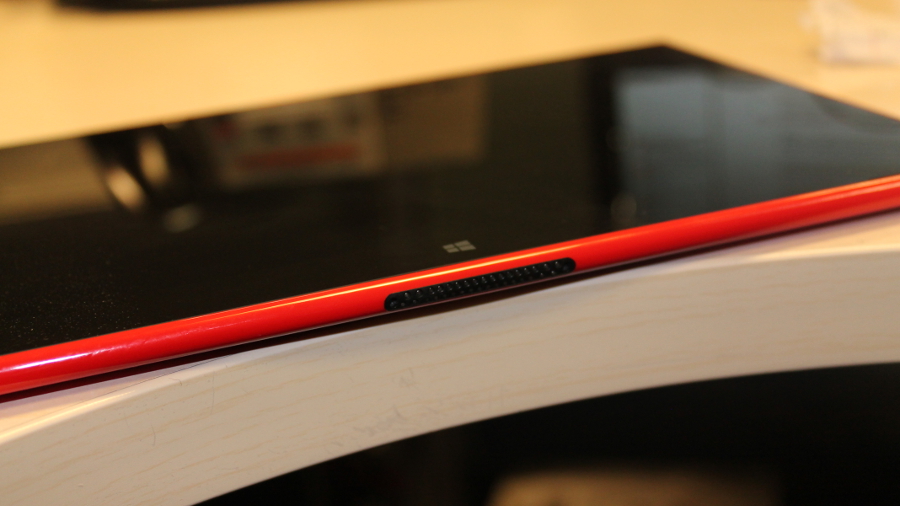
It connects to the tablet's base using a magnetic strip and it offers a single USB 2.0 port for connecting up other devices. Nokia claims that the keyboard's 2027 mAh battery provides around five hours of additional battery life.
That the keyboard offers a USB port is particularly annoying because it should have been built into the Lumia 2520 itself - the device is exactly the same thickness as the Surface 2 that managed to squeeze in a full-sized one. Picking a convertor up isn't difficult if you shop online, but having an adapter constantly sticking out of the side of your tablet is a jarring experience, as smaller 8-inch Windows 8 tablets have proved recently.
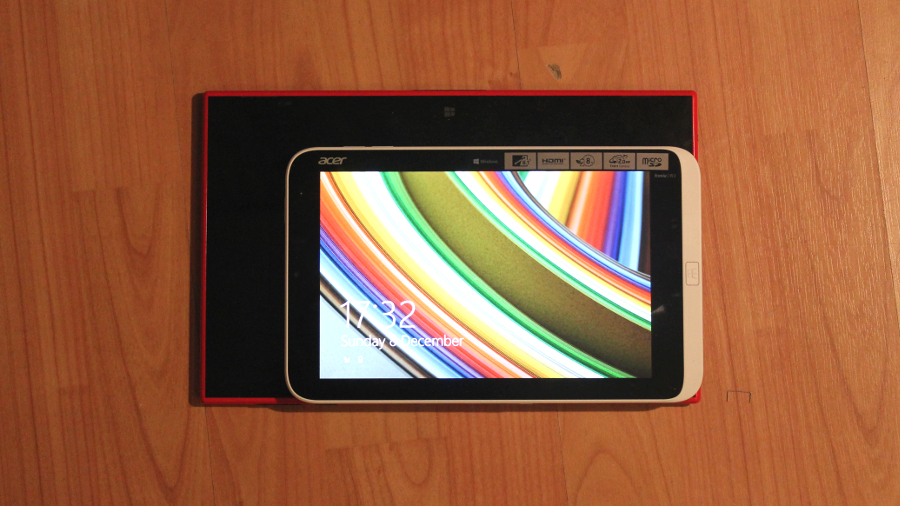
4G-whizz
When it comes to hooking the Nokia Lumia 2520 up to the internet, its maker has taken the unconventional approach of chucking in LTE whether you like it or not. That's right: even if you're not too fussed about connecting up to the super-fast broadband in the sky right now, you won't have to trade in the model for a 4G-compatible version if you change your mind in the future.
Wi-Fi connectivity is provided via a Qualcomm Atheros AR6x04 WLAN adapter, which reliably kept its connection to our local Wi-Fi network. Unfortunately it's 802.11n, meaning you won't be able to take advantage of the faster speeds offered by 802.11ac routers.
With a super bright display, svelte dimensions and pleasingly comfortable construction, the Nokia Lumia 2520 isn't a tablet that's designed to be confined within four walls, so it's a good thing that Nokia has fitted it with a leggy 8000mAh battery.
Nokia claims that the battery will last for 25 days on a single charge, a test we didn't quite have time to verify. However, in general use (browsing the internet, playing some videos and undertaking some light gaming with the screen set to maximum brightness), the 2520 lasted an admirable 10.5 hours.

You don't have to wait long for it to charge either. Having to use Nokia's proprietary charger is something of a pain, but it means that the Lumia 2520 can go from zero to 80% charge in just one hour. Considering its battery life, that's one impressive feat.
Once you've powered up and logged in, the tablet's Snapdragon 800 processor zips along without any discernible lag or hiccups. As with the Surface 2, its pre-installed Microsoft Office Home & Student 2013 RT apps load up on command within a few seconds, adding to the tablet's pick-up-and-go feel.

After firing up 3DMark for Windows RT, we were forced to use the most graphically demanding benchmark it offers, because the others were "too light for your device". We didn't get that message when running the same app on the Surface 2, so it appeared off the bat that the Lumia 2520 packs more power - but is it substantially more?
Running the Ice Storm Unlimited benchmark gave us a test score of 16,864, which comfortably beats the Surface 2's score of 13,151. That extra power should come in handy when playing more graphically powerful titles on the platform.
Despite its impressive battery life, powerful hardware and inviting looks, the Nokia Lumia 2520 merely limps along due to the thorn in its foot that is Windows 8.1 RT, and it's a shame.
Sure, the OS brings improvements over Windows 8 RT: tighter integration of Microsoft's SkyDrive cloud storage service brings much-needed offline file-editing, caching and automatic syncing, in addition to more flexible customisation of Start Screen tiles. For more on Windows 8.1 RT's new features, check out this.

But it's the equivalent of dousing the fire destroying the tree in the front garden when the house is burning down. You wouldn't begrudge somebody doing it, but it doesn't solve the main issue at hand.
Windows RT 8.1 still doesn't let you install any of the 4 million desktop Windows apps in circulation today, instead forcing you to use ones from Microsoft's own app store. That's not the regular Windows 8 Windows Store that's introduced over 100,000 new apps over the last 12 months either, it's the RT variant that's still majorly lacking.
There are many reasons why this is irksome: the most obvious being that it seriously restricts what you can do with the device. You can't even download a browser other than Internet Explorer, which leaves you locked out of Chrome and Firefox's growing ecosystems of extensions.
Other big name apps are missing too, such as Dropbox and IMDB. Crucially for music lovers, Spotify is missing, forcing you to use the web app instead. Spotify's absence is particularly troubling as the company could be in the running to offer its music service for free on mobile services for the first time (supported by advertisements), which is just one example of how you would be missing out if you opted for a tablet running Windows RT than one running full-fat Windows.

On the other hand you get Microsoft Office Home & Student 2013 pre-installed. It includes Outlook, Word, OneNote, Excel and PowerPoint, all of which run on the desktop rather than in full-screen Modern UI mode. The apps are touch friendly thanks to enlarged toolbars, but you'll still need a bluetooth keyboard (Nokia Power Cover or otherwise) and a bluetooth mouse if you're serious about getting any actual work done.
Thankfully, the Office RT apps open faster than ever before, with no waiting around like you had to do on the Surface RT (which has since been renamed to just Surface), and files can be saved directly to SkyDrive and edited offline in a similar manner to Google Drive and Dropbox's desktop apps. Once you're back online the edited files are automatically synchronised to Microsoft's servers.
Nokia apps
And then there's Nokia's own apps that come with the device. Though welcome, they're hard to get excited about, made up of Nokia's HERE Maps, Nokia Music, Nokia Camera, Storyteller and Nokia Video Director.
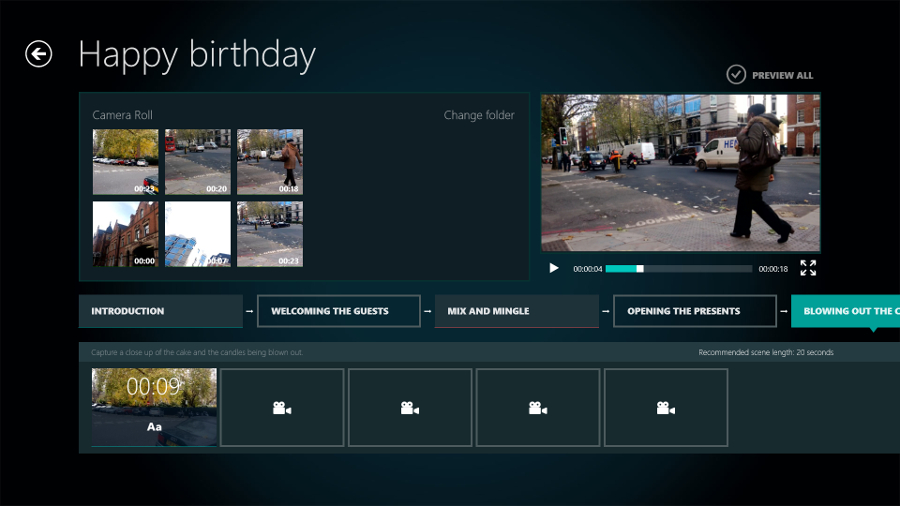
Nokia Video Director is an slickly presented video editing app that lets you line up different clips to make into a longer reel. You can choose to import videos from the camera roll or shoot them there and then, trimming any footage in the process before applying effects and captions. It's a fun and novel way of putting together an amateur production - such as weaving together birthday events in chronological order - but it isn't really suited to anything more complicated.
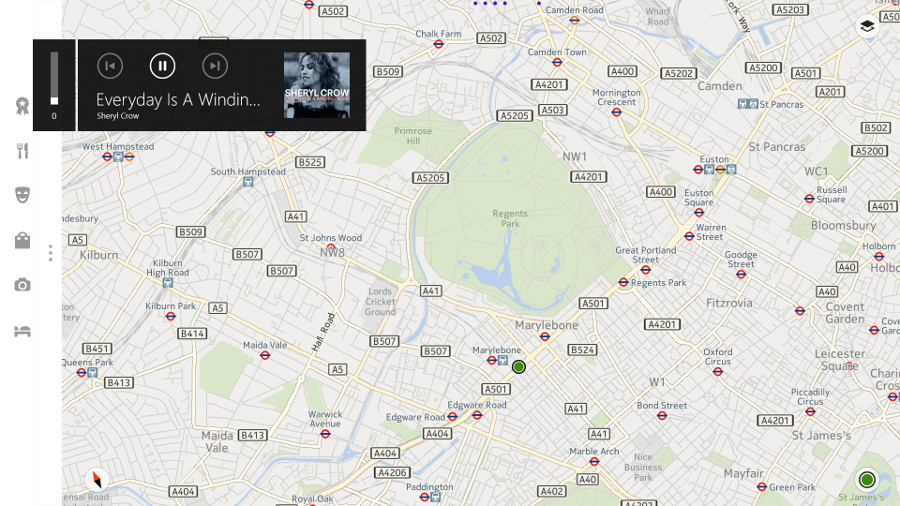
Google hasn't yet released its own mapping app on Windows RT 8.1 (you would have to use its browser-based Google Maps instead), so you're left with a choice of Nokia's own capable HERE Maps or Microsoft's Bing Maps app if you're looking for a native solution to guide you around on the Nokia Lumia 2520.
Nokia's Maps app features similar controls to Google's offering, allowing you to navigate by dragging your fingers in different directions and tapping to zoom. LIke Google Maps it serves up local search data with directions for walking and driving, but there isn't a great deal setting the two offerings apart. Nokia's HERE maps is a solid alternative in the absence of Google Maps, and opting for a 4G SIM would clearly benefit happy wanderers.
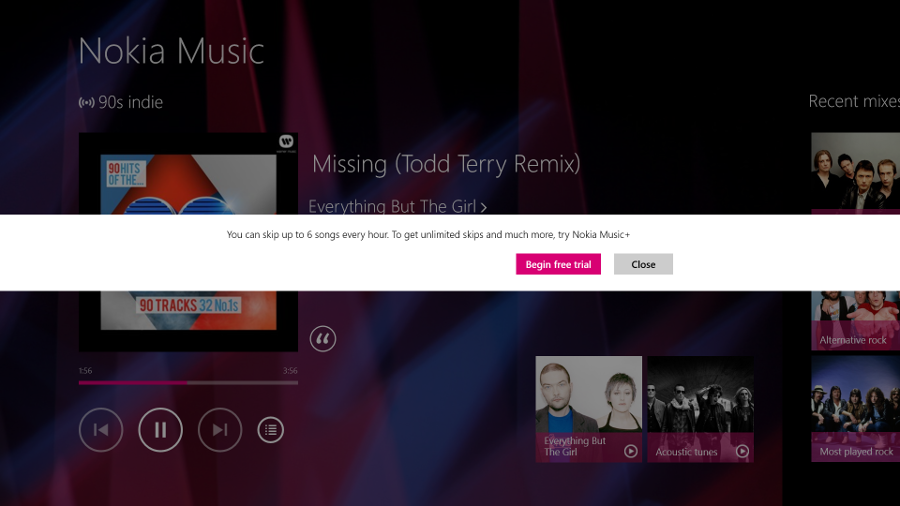
Nokia Music is a confusing app. I expected it to be a Spotify-like music streaming service, but instead you're restricted to music stored locally on the device or 'mixes' sorted by genre that are streamed from the company's cloud.
There's no apparent structure to how you cycle through the tracks; clicking the 'next' button plays the next queued track (there's no way of knowing what's in the playlist), and the service stops every hour after you've gone through six plays unless you sign up to Nokia's premium Nokia Music+ service. All in all, it's not particularly compelling.
It did however give us a chance to test the Nokia Lumia 2520's speakers, which provide rich and satisfying sound out of the front-facing speakers that are hidden behind the screen along the bottom.
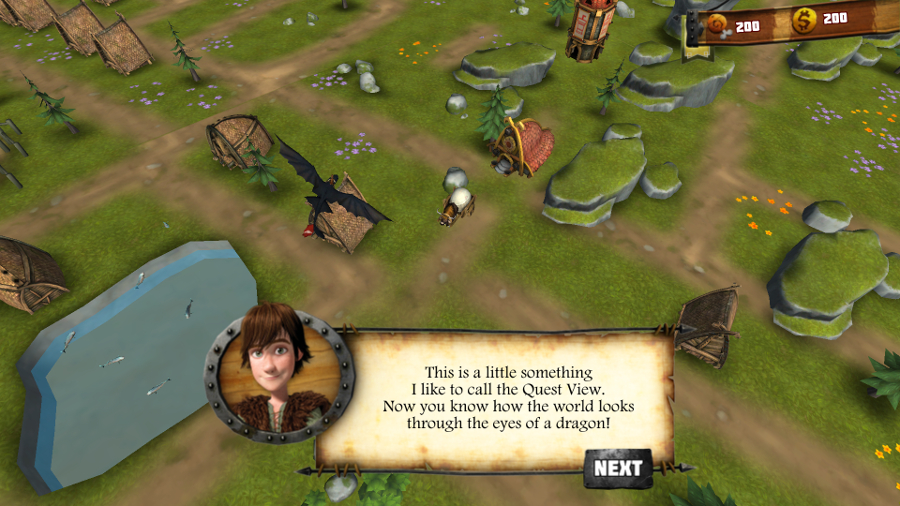
The only game bundled with the 2520, Disney's Dragons Adventure, is based on an intriguing concept. You control the movements of a dragon that flies around in the air, whether that's catching fish out of a pond or gathering resources. The path of the dragon changes as you move (it follows the tablet via its GPS link), meaning that your real-world route has an impact on the game. Is it worth buying the Nokia 2520 for? Absolutely not, but it'll keep younger gamers happy during Sunday trips out with the parents.
The Nokia Lumia 2520 features both front and rear-facing cameras. The front-facing camera, which can be used for face-to-face conversations in Skype or Google Hangouts, captures video at a standard 720p resolution. The quality isn't spellbinding and it fares better in brighter light conditions, but it does the job if you temper expectations.
The rear camera is a much better 6.7-megapixel snapper that features Zeiss optics (the company's branding can be found on the shell's rear) with a f1.9 aperture. If you're planning on using the tablet as your primary camera (and we hope you're not), the rear camera takes decent shots, even in the absence of Nokia's lauded PureView technology.
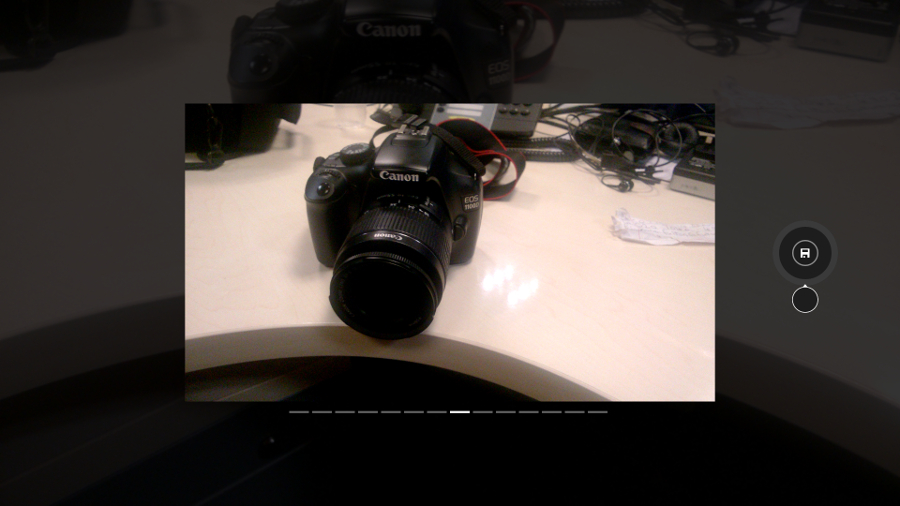
But just because the Lumia 2520 looks like a blown-up Lumia smartphone, it doesn't mean it should be used as one. Focusing is a little on the slow side, and you're better off trying to get closer to your target than using its blurry 4x zoom.
You get the choice of Microsoft's native camera app or the Nokia Camera app when taking pictures. Both have their own strengths - Nokia's being the ability to take several photos at once before picking out the best saving it using an on-screen dial.
Once saved, images can be cropped and edited using basic tools such as auto-fix and others to apply basic effects. Annoyingly you can't share photos directly after you've taken them - you'll have to open them into Windows Photo viewer on the desktop for that.
Microsoft's camera app doesn't let you capture and sift through multiple snaps, forcing you to take one at a time. However, it does offer a manual zoom function that puts the image in focus by tapping on the area you want to focus on, much like on iOS.
When it comes to shooting video using a rear camera, tablets are yet to get it right, even in the case of wallet-emptying offerings such as Microsoft's Surface Pro 2 that captures low-quality, grainy footage. The Nokia 2520's is much better. It's not crystal clear, but its 1080p rear camera is more than up to the task of capturing general shots in well-lit conditions.
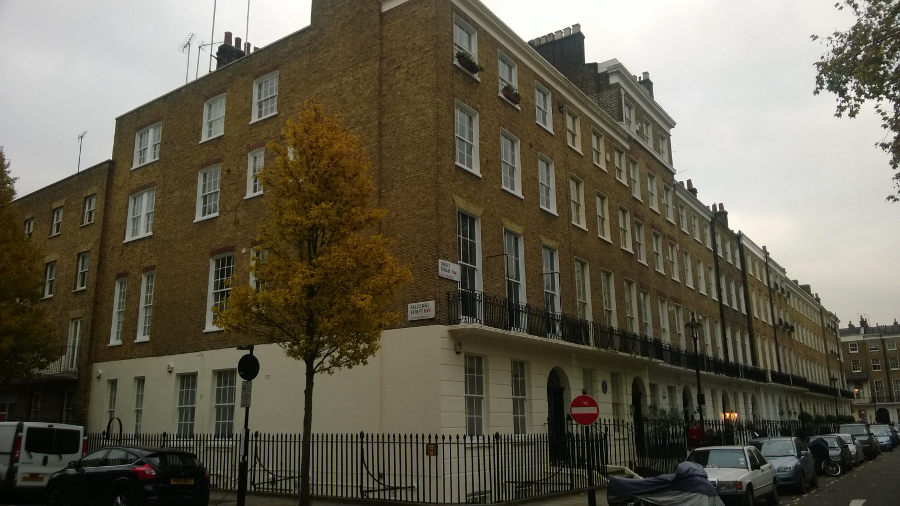
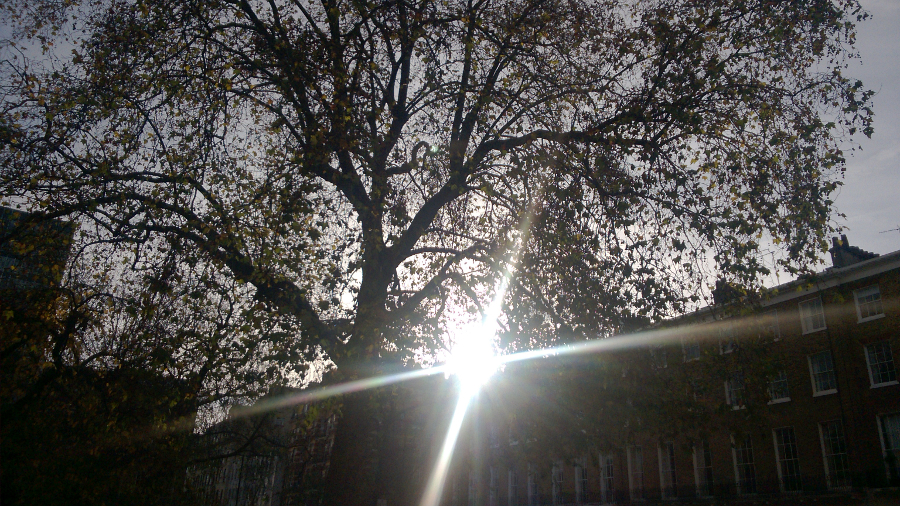

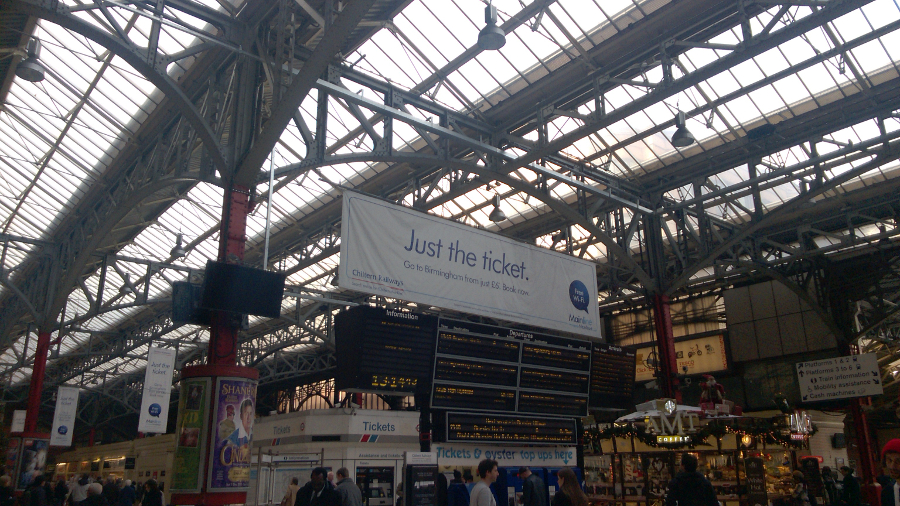
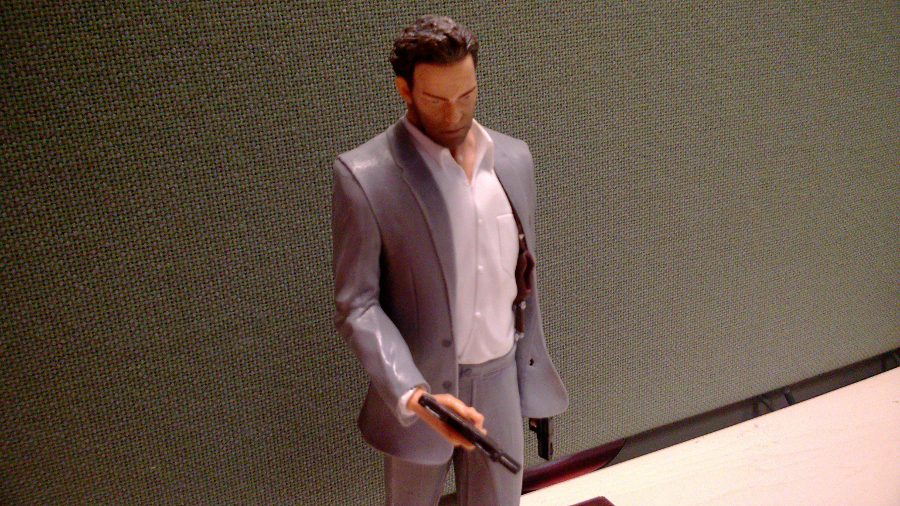
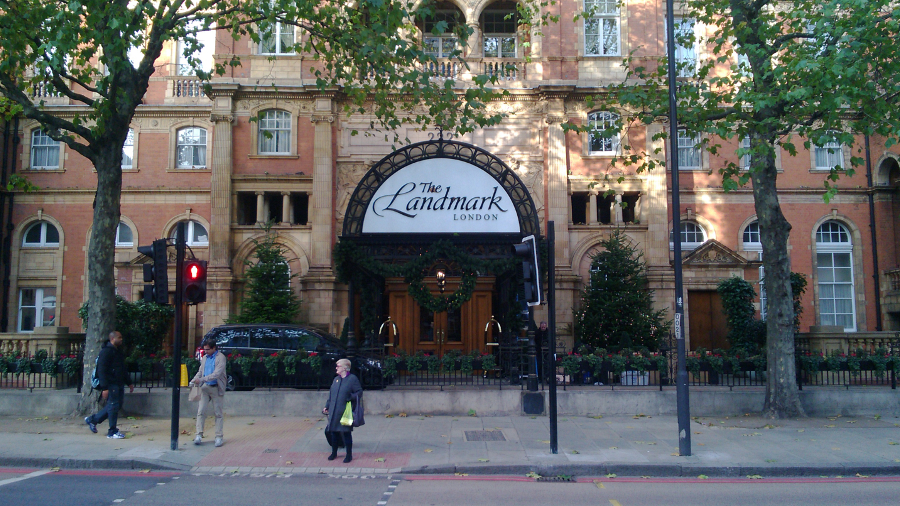

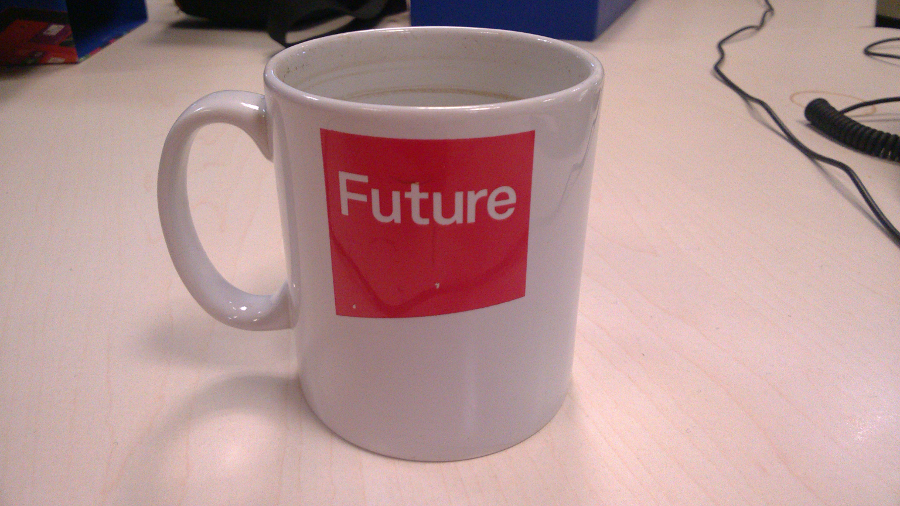

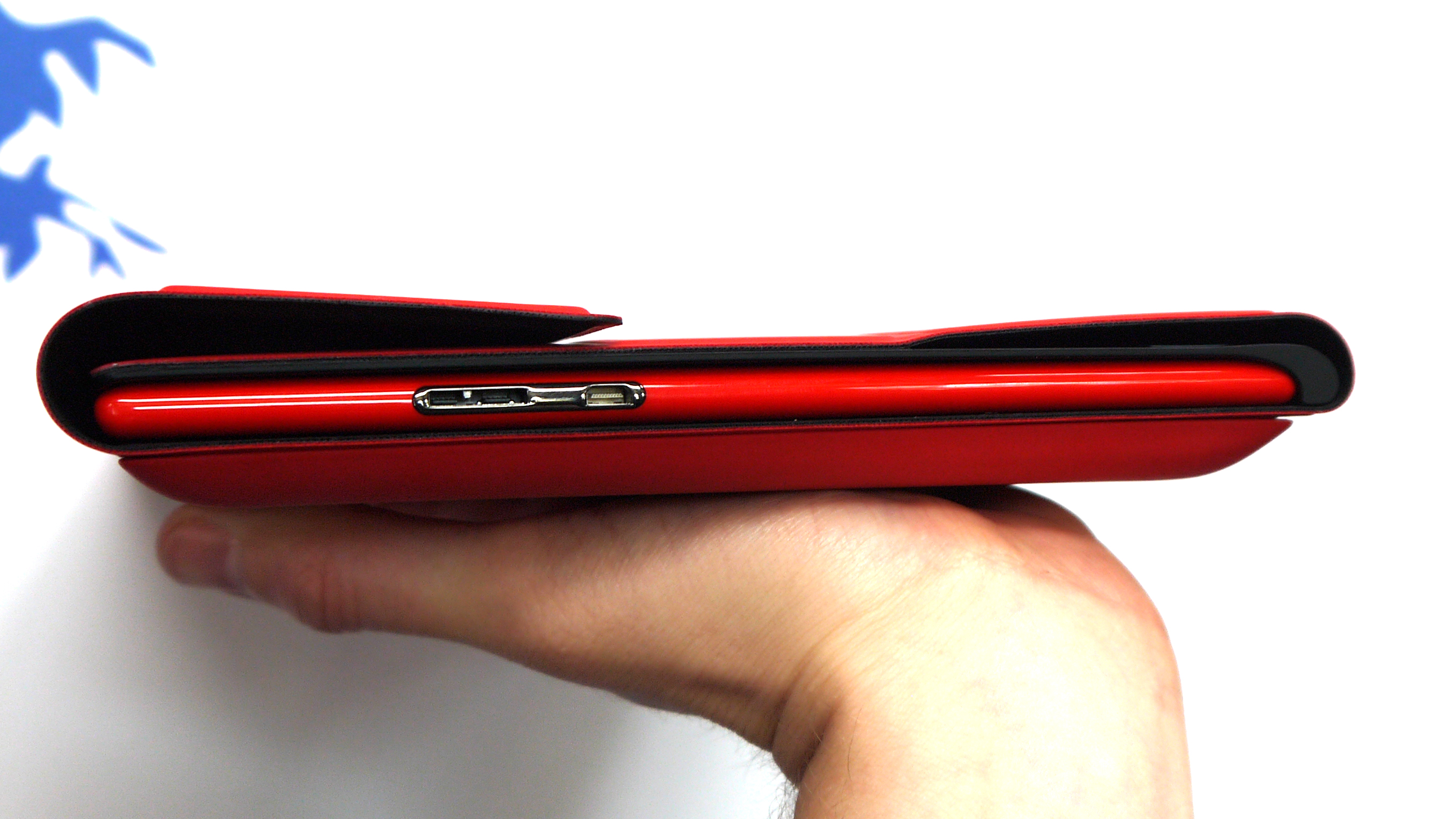





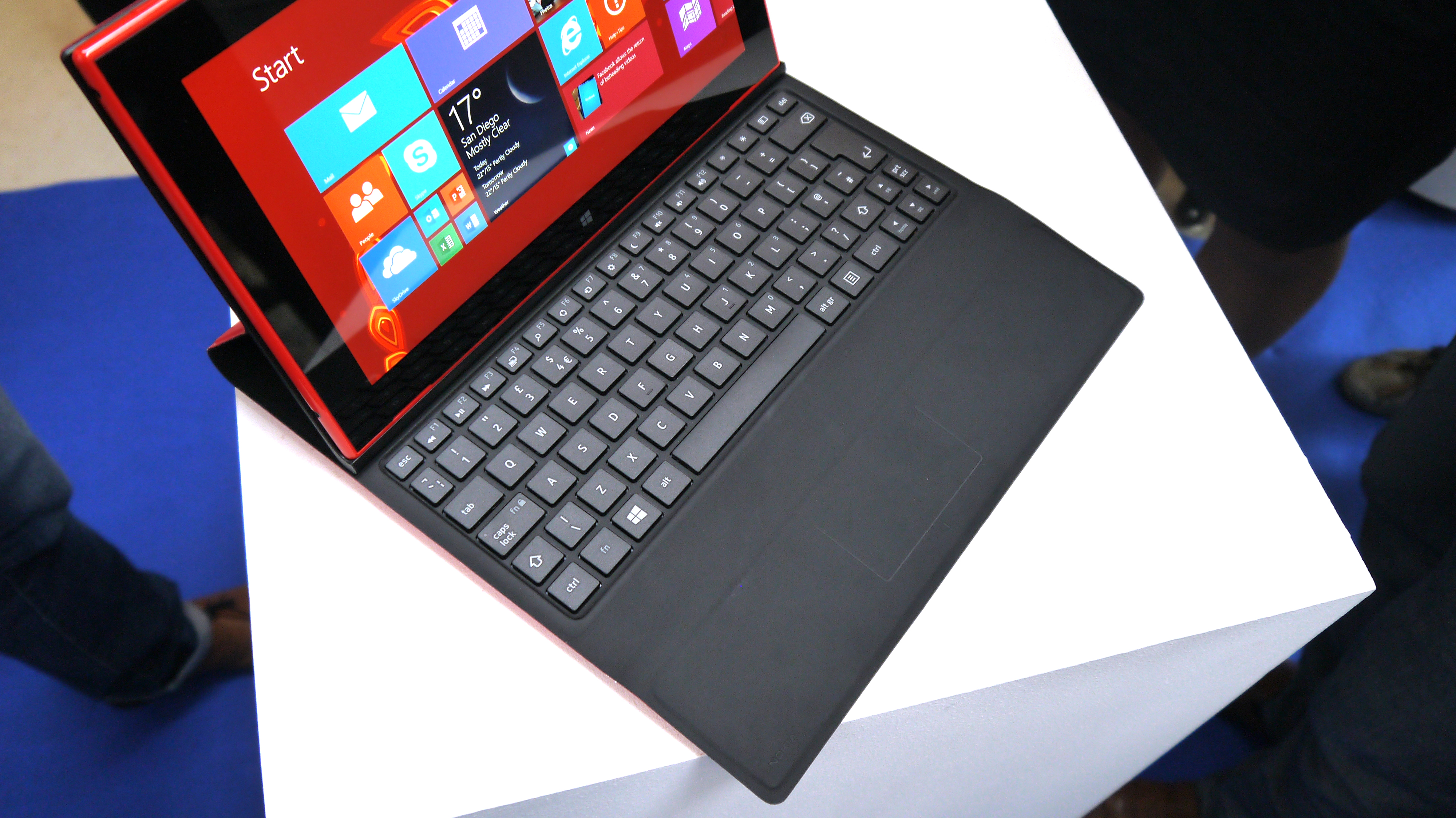

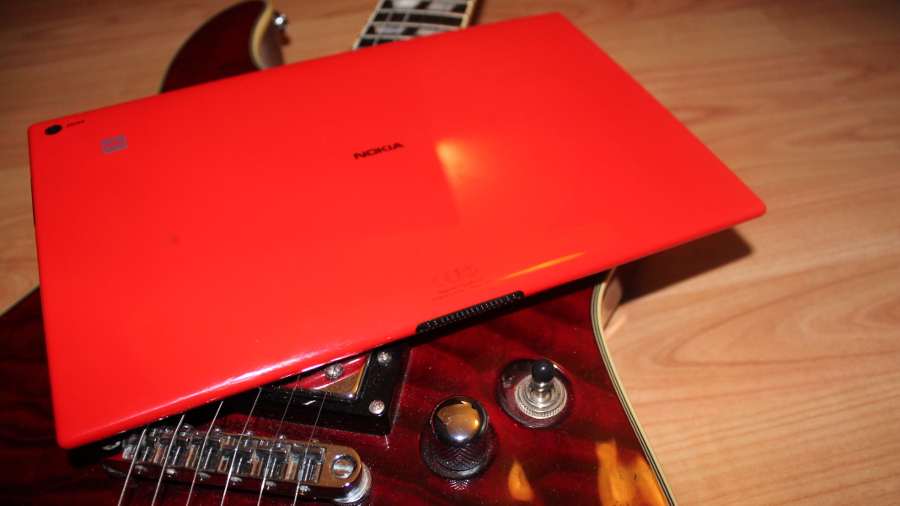
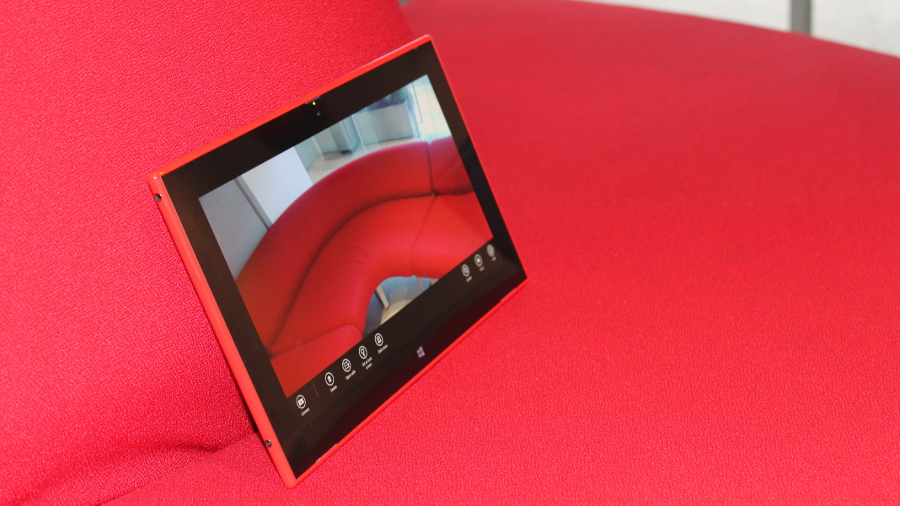



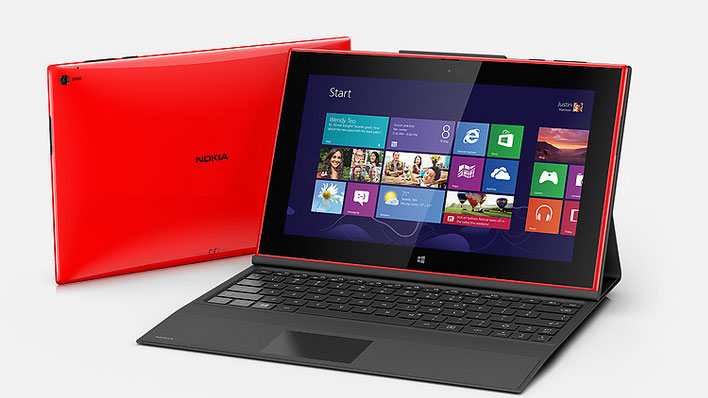
When Nokia announced the Lumia 2520 back in October, it was hard to see past the fact that it would run Windows RT. Unfortunately, despite a number of excellent features - from its near 11-hour battery life to one-hour charging, decent speakers and excellent outdoor readability - the fact that you just can't do much with it in the absence of useful apps or legacy desktop programs means that it's difficult to recommend.
We Liked
First the good: the Nokia Lumia 2520 has set the gold standard for tablets to aspire to when it comes to battery life, going the distance and powering up quickly when asked.
It also features a mighty impressive IPS display that, despite not being the highest resolution out there, is fantastic for reading outdoors and really brings Windows 8.1 RT's vivid colors to life. Holding the tablet is a joy too, its curved dimensions smooth to touch without coming across as poorly constructed, even if it feels a little unevenly balanced at times.
It could be something of a killer games machine too - so long as you stick to the ones from the Windows RT 8.1 Store. Our benchmarks served up Surface 2-beating numbers, meaning there isn't really any contest between the two if light gaming and battery life are at the top of your list.
That decent performance extends to other areas of the tablet - anything you do from opening and switching between apps using the OS's charm menus - is seamless and stutter free.
We didn't like
Windows RT, Windows RT, Windows RT. We can't say it enough: it was always a massive gamble opting for the much-maligned operating system, and it's one that simply hasn't paid off.
It's difficult to deny that the Lumia 2520's hardware impresses, but once that sheen has worn off, there's little underneath to keep you returning for more at this moment in time. Unless you use the Lumia 2520 for one or two specific purposes - whether that's browsing websites in Internet Explorer 11 or typing up documents in Word - there's simply not much to do with it.
And even if you're only planning to use the Lumia 2520 as a casual content consumption device, you're sure to be irked by its lack of a kickstand and full-sized USB port. Splashing out on a pricey Power Cover is even more of a must than buying a keyboard cover was for a Surface 2 (you could use a wired keyboard with its built-in USB if you was desperate), which drastically limits the Lumia 2520's appeal as a pick-up-and-go device.
Verdict
The bottom line goes like this: if the Lumia 2520 ran full-fat Windows 8 and added a kickstand, we would be looking at the most compelling Windows 8 tablet ever.
But it doesn't, so we're stuck with one featuring a half-baked operating system that benefits from some incredibly nifty and unique features while taking away ones that seem incredibly simplistic and even taken for granted these days (kickstand, we're looking at you).
Microsoft's Surface 2 and Surface Pro 2 tablets suffered from something of an identity crisis, so the company didn't hold back when offering configurations and accessories en mass.
I feel like the Nokia 2520 should have done the same to avoid becoming the watered down, lightweight offering that it has. Compromises have been made in the wrong areas, and the overall package is much less appealing as a result.
I'd love to see a tablet outed that's halfway between a Surface Pro 2 and a Nokia 2520 - one with outstanding battery life and charge times, a vibrant bright screen and a playful polycarbonate shell. Of course, it would have to run Windows 8.1 and have a kickstand too.
Come on, Microsoft. Give Nokia a pop at a successor and show us what it's really capable of.

